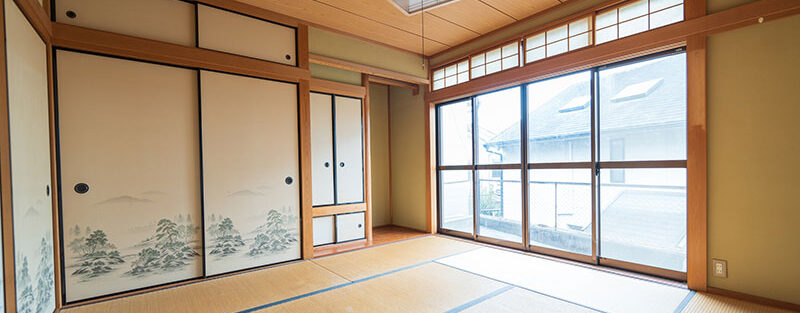ブログ
2025-05-01
What Every Visitor Should Know

Essential Japanese Etiquette: What Every Visitor Should Know
Japan is famous for its cleanliness, politeness, and deep respect for tradition. As a visitor or new resident, understanding basic cultural etiquette can help you avoid awkward situations and connect more easily with locals. Here are a few essential manners to know before coming to Japan.
1. Shoes Off, Please!
One of the most important rules in Japan: take off your shoes indoors.
At homes, some restaurants, temples, and traditional inns (ryokan), you’ll be expected to remove your shoes at the entrance.
There will usually be a genkan (entryway) with a step up. Leave your shoes in the lower area and step up in your socks or use provided indoor slippers.
In places like toilets, you might even find separate toilet slippers. Don’t forget to change back into the regular slippers when you exit!
Tip: Wear clean socks since you’ll often be showing them!
2. Greeting and Bowing
In Japan, bowing is more common than shaking hands.
A slight bow is used to say hello, thank you, goodbye, or sorry depending on the situation.
Deep longer bows show more respect used in formal situations or to apologize sincerely.
Most Japanese people understand foreigners may not bow correctly, but trying shows respect and is appreciated.
Tip: A small nod with eye contact can go a long way if you’re unsure!
3. Onsen Etiquette (Hot Springs)
Visiting an onsen (Japanese hot spring) is a must-try cultural experience, but it comes with specific rules.
Shower and wash your body before entering the bath. Cleanliness is very important and baths are for soaking, not for washing.
No swimsuits because in almost all traditional onsen, bathing is done naked. There are separate baths for men and women.
Tattoos may not be allowed in some places due to their association with organized crime. However, more onsen are becoming tattoo-friendly or offer cover-up stickers.
Don’t splash or swim and keep it calm and relaxing.
Towels stay out of the bath. You can place your small towel on your head or on the edge of the bath.
Tip: If you’re nervous, try a “super sento” or private onsen room to ease into the experience.
4. General Politeness
Some everyday tips are like
Speak quietly in public places like trains and buses.
Don’t eat while walking on the street. this is often considered messy or disrespectful.
Always say “thank you” (arigatou gozaimasu) and “excuse me” (sumimasen), these two words will carry you far.
Final Thoughts Japanese manners may seem strict at first, but they’re based on consideration for others. By learning a few basics like when to remove your shoes or how to bow you’ll show respect for the culture and enjoy smoother, more meaningful interactions during your time in Japan.
Japan is famous for its cleanliness, politeness, and deep respect for tradition. As a visitor or new resident, understanding basic cultural etiquette can help you avoid awkward situations and connect more easily with locals. Here are a few essential manners to know before coming to Japan.
1. Shoes Off, Please!
One of the most important rules in Japan: take off your shoes indoors.
At homes, some restaurants, temples, and traditional inns (ryokan), you’ll be expected to remove your shoes at the entrance.
There will usually be a genkan (entryway) with a step up. Leave your shoes in the lower area and step up in your socks or use provided indoor slippers.
In places like toilets, you might even find separate toilet slippers. Don’t forget to change back into the regular slippers when you exit!
Tip: Wear clean socks since you’ll often be showing them!
2. Greeting and Bowing
In Japan, bowing is more common than shaking hands.
A slight bow is used to say hello, thank you, goodbye, or sorry depending on the situation.
Deep longer bows show more respect used in formal situations or to apologize sincerely.
Most Japanese people understand foreigners may not bow correctly, but trying shows respect and is appreciated.
Tip: A small nod with eye contact can go a long way if you’re unsure!
3. Onsen Etiquette (Hot Springs)
Visiting an onsen (Japanese hot spring) is a must-try cultural experience, but it comes with specific rules.
Shower and wash your body before entering the bath. Cleanliness is very important and baths are for soaking, not for washing.
No swimsuits because in almost all traditional onsen, bathing is done naked. There are separate baths for men and women.
Tattoos may not be allowed in some places due to their association with organized crime. However, more onsen are becoming tattoo-friendly or offer cover-up stickers.
Don’t splash or swim and keep it calm and relaxing.
Towels stay out of the bath. You can place your small towel on your head or on the edge of the bath.
Tip: If you’re nervous, try a “super sento” or private onsen room to ease into the experience.
4. General Politeness
Some everyday tips are like
Speak quietly in public places like trains and buses.
Don’t eat while walking on the street. this is often considered messy or disrespectful.
Always say “thank you” (arigatou gozaimasu) and “excuse me” (sumimasen), these two words will carry you far.
Final Thoughts Japanese manners may seem strict at first, but they’re based on consideration for others. By learning a few basics like when to remove your shoes or how to bow you’ll show respect for the culture and enjoy smoother, more meaningful interactions during your time in Japan.